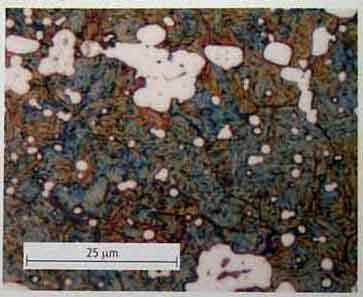In this case what you are seeing is most likely just random based on the nature of the steels and the initial state.jackknifeh wrote:This is the only comparison I did and I hadn't planned on doing it which is another reason my opinion is somewhat vague.

Here is a shot of S30V, now imagine drawing a line through that. The line will be the edge of the knife. It should be clear that if you draw multiple lines you could get differences in how much carbide ends up on the edge and this will effect how the edge responds in sharpening. This can be really dramatic on non-pm steels as they look like this :

Just draw a line through the top vs the middle.
The placebo effect and similar conclusion biases are extremely strong, so much so if you don't account for them they will dominate your results. This happens even if you are aware of them, it doesn't matter, they happen below the conscious level as they are just part of the fundamental ways we are able to make very rapid decisions which was necessary for early survival. Everyone is so biased, if you don't think you are it just means you are delusional as well as biased. The reason that experimentalist methodology can be intricate is to try to minimize these, no one does blinding and random sampling because it is inherently attractive, it is just without doing it you don't actually know if you are seeing an actual result or just what you "want" to see.Since I did get the Chaparral I've "had a feeling" XHP held an edge longer than S30V but that "feeling" may have been "just in my head" as BH suggested. Maybe my head needs some testing??? :)
I had a kitchen knife for example which I had found difficult to sharpen to a very high level (shave above the skin, push cuts newsprint 1" from the point of hold, etc.). Now initially this was likely true because the edge was damaged as-boxed as they often are for numerous reasons. However it didn't respond well even after subsequent use but before I wrote it off an formed that conclusion I needed to check if it was nothing more than my perception of that knife forcing the conclusion. This sounds silly but your brain works like that. You can find something difficult simply because you have convinced yourself that it is that way. I was later able to sharpen it to the same high level easily with nothing more than a change in mindset. This kind of problem is also eliminated much more rigorously by blinding in experiments.
Overall though, have fun and enjoy what you are doing because if you don't then you are not going to continue doing it. The only real constraint in learning is that one question I noted in the above, as long as you keep asking it you will learn and the minute you stop asking it you stop learning.